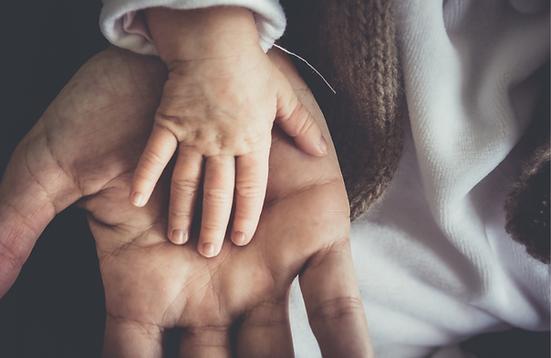
What is Schema Therapy?

Schema Therapy is an integrative therapy, developed by Jeffrey Young and colleagues, which combines elements from CBT, attachment theory, gestalt, object relations and psychoanalytic schools.
Schema Therapy was initially developed with the aim of treating people with more complex mental health difficulties (often ascribed a diagnosis of personality disorder) who didn’t seem to respond well to traditional models of CBT.
Jeffery Young (who was trained in CBT) observed that CBT was inadequate for a cohort of patients. He noticed that patients stuck in rigidly self-perpetuating and self-defeating cycles either did not respond to or relapsed after existing (short-term) CBT interventions.
He set about identifying both the characteristics of this groups of patients and the treatment strategies that might better address their needs.
He turned to other therapy models and was inspired by those with a broader relational perspective. Through his research he created a “unifying conceptual and treatment model” with schema therapy.
Whilst initially developed for people with complex presentations there is now widespread recognition that schema therapy is a highly effective model for working with a range of presenting difficulties.
Core Elements:
-
Focus on emotions
-
Biographical aspects of the problem development
-
The therapeutic relationship in the form of limited re-parenting
Core Emotional Needs
Psychological needs are an integral part of the schema therapy model and an important focus for the limited reparenting intervention. There is an underlying assumption that every child has the same basic psychological needs. Young and his colleagues proposed that if one or more of these core emotional needs is not met in childhood or adolescence or an individual suffers a traumatic experience, then inflexible, unhelpful early maladaptive schema may develop which lead to difficulties in later life.
What are Schemas?
Schemas are like emotional buttons which get activated. They are a fixed framework that contains memories, thoughts, emotions and physical sensations.
They are an internal working model or blueprint for how the child makes sense of themselves, others and the world around them.

Every time child experiences an unmet need, they have to learn ways to cope and survive these needs not being met. These ways of coping are helpful and adaptive in childhood as they allowed the child to cope, but these schemas can cause problems in adulthood and later life as they are rigid and persistent.
Schemas are like long term character traits.
Schemas develop when our core needs our not met.
Through his extensive research and development of the schema model, Young et al (2003) identified 18 schemas which he grouped into 5 domains.
These 5 separate domains map onto the basic core emotional needs.

Coping Styles
Schema therapy identifies 3 broad coping styles: overcompensation, avoidance and surrender. These coping strategies our linked to our innate/biological drive to respond to threat and can be defined as fight, flight and freeze.
Overcompensation – fight
Person thinks and behaves in the opposite way to the schema
Avoidance – flight
Person tries to escape from activating the schema
Surrender – freeze
The person gives into the schema, believing the schema is true and behaves accordingly
Our coping styles are not fixed, they can vary across situations or at different times in a person’s life. Most people have a predisposition for a certain style. This can depend on their temperament and what they have experienced as a child in their social environment.
Coping styles maintain and reinforce schemas because they continue to prevent the person from getting their core emotional needs met. This is where the self-perpetuating and self-defeating patterns come in. Jeff Young called them life traps. They made sense at the time: they were the only choice the little person had, but as an adult, responding in these limited ways creates difficulties.

What are Schema Modes?
Through development of the schema model, it became increasingly clear that some people struggled with multiple schemas (or for some the majority of schemas). This led to the development of the mode construct.
Schemas are like a trait – as mentioned earlier. Schema modes are more like a state.
Young (2003) defined a mode as an “emotional state of mind and coping response from one moment to another”. A mode is a mental state in which certain clusters of schemas and coping modes are triggered simultaneously. Triggering one or more schemas at a time may go hand in hand with intense emotions.
Four groups of modes have been categorized:
1.Functional modes
Healthy aspects of the person and includes healthy adult mode and the health child mode. These modes have a balanced and flexible attitude to life.
2.Maladaptive child modes
Intense emotional states like the ones experienced in childhood when core needs aren’t met, such as safety or security. They include the vulnerable child mode and the angry child mode.
3.Dysfunctional critic modes
These are not innate but develop in response to early childhood experiences and are internalised representations of the negative elements of a child’s early life experiences and take the form of self-critical, menacing and demanding voices or self-talk.
4.Dysfunctional coping modes
These enable the suppression of intense emotions that originate from the child and critic modes. They represent the child’s attempts to satisfy unmet core needs in an environment that was emotionally impoverished, oppressive or obstructive.
Goals of schema therapy
These are some of the more general goals of schema therapy. Each client will have personalised goals based on their schema therapy case conceptualisation.
-
Identifying EMS that are maintaining the presenting problem behaviours and seeing how these schemas are played out in everyday situations.
-
Changing/ challenging unhelpful (dysfunctional) beliefs by building more adaptive beliefs which can be used to challenge schemas.
-
Breaking down unhelpful (maladaptive) life patterns into manageable steps and changing coping styles.
-
Strengthen the Healthy Adult by relating to the vulnerable child mode with compassion and building new coping styles that get the needs of the vulnerable child mode met.
-
Heal the child modes through imagery rescripting and strengthening the healthy adult.
-
Externalise and reduce the volume of the critic modes.
-
Set limits on the coping modes.
